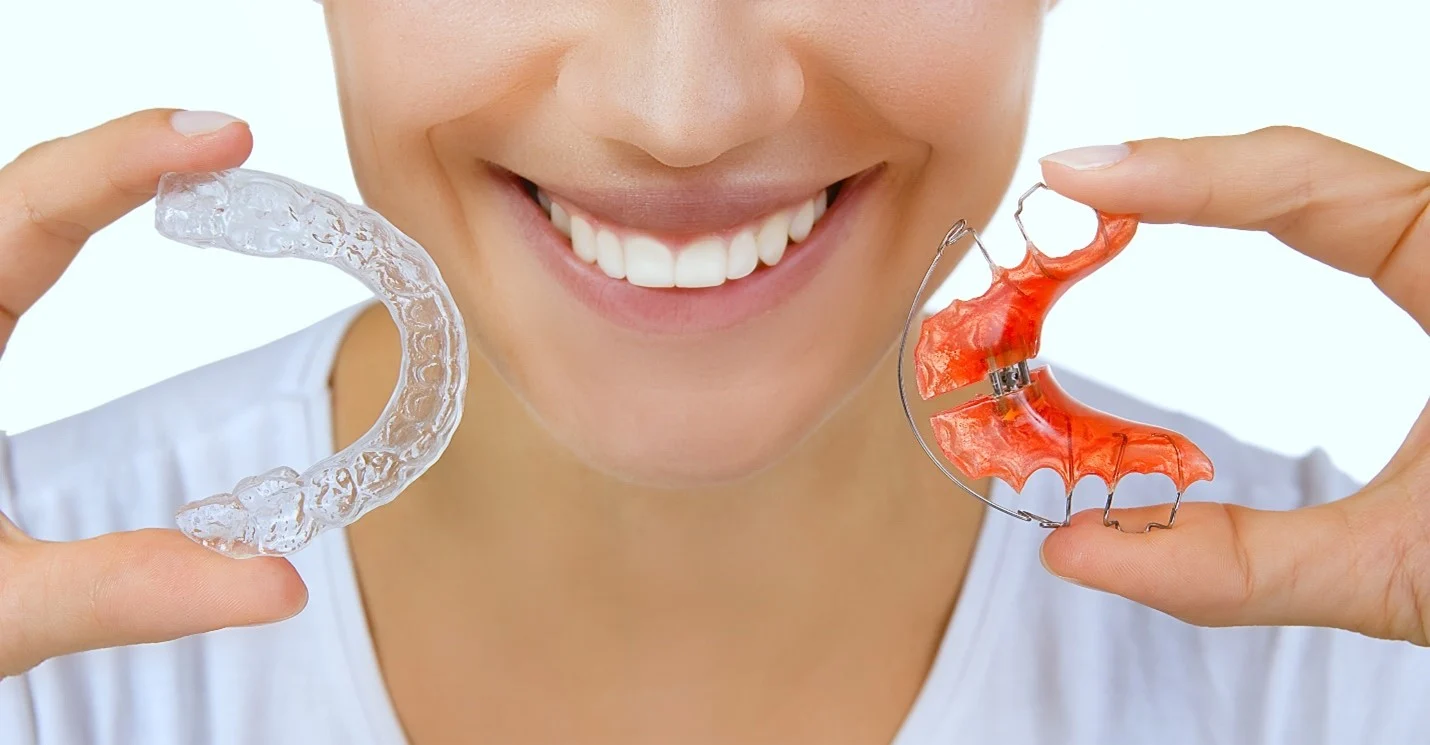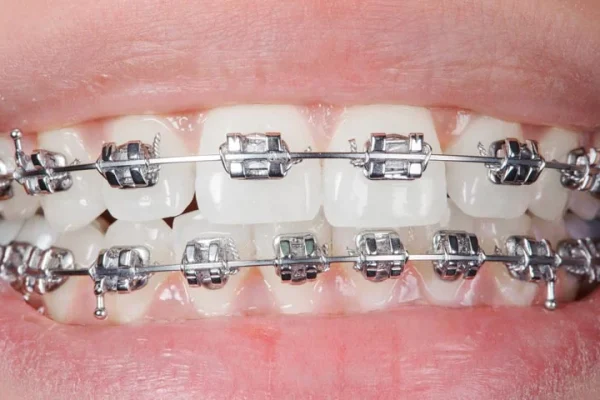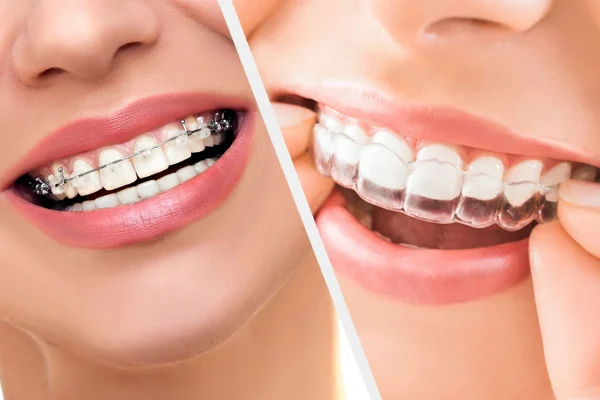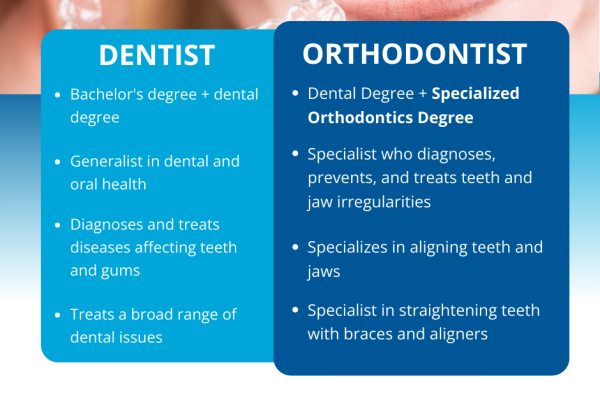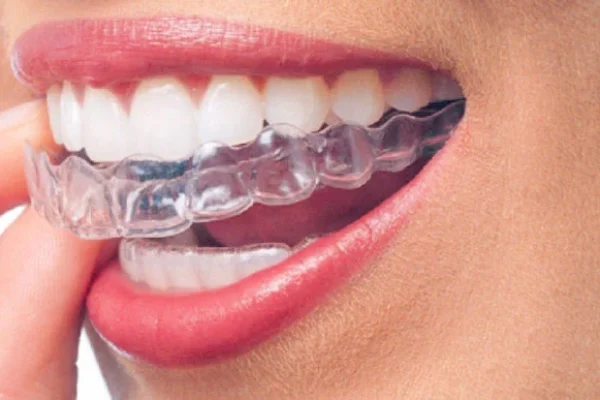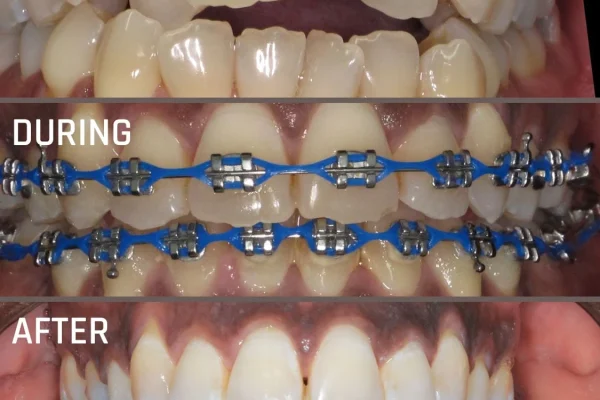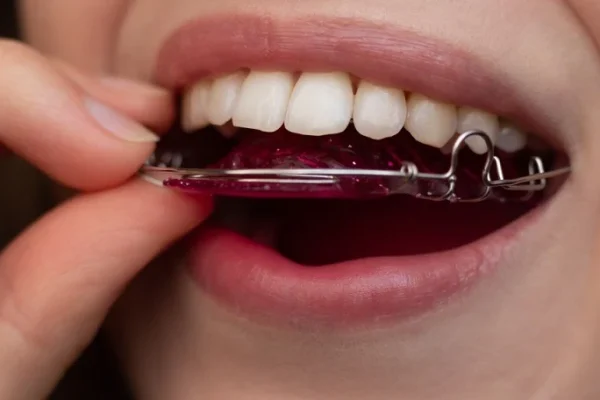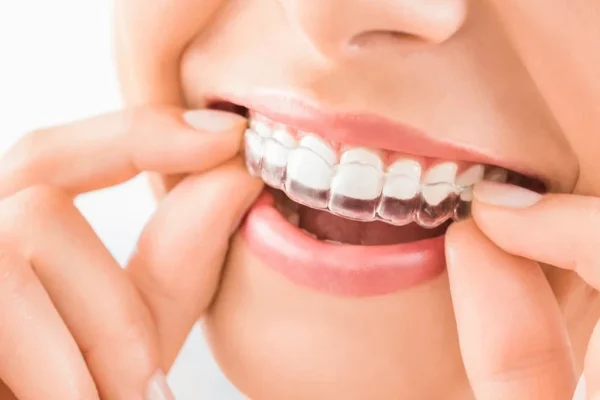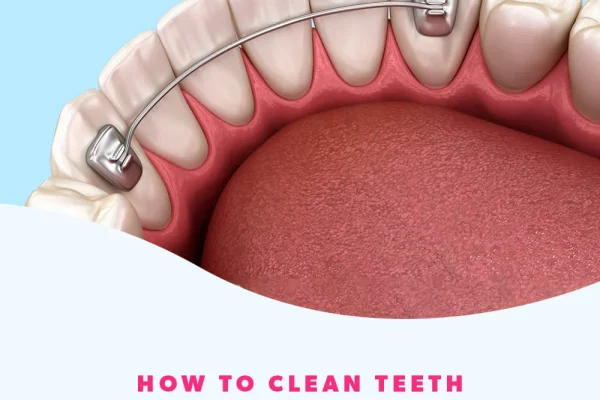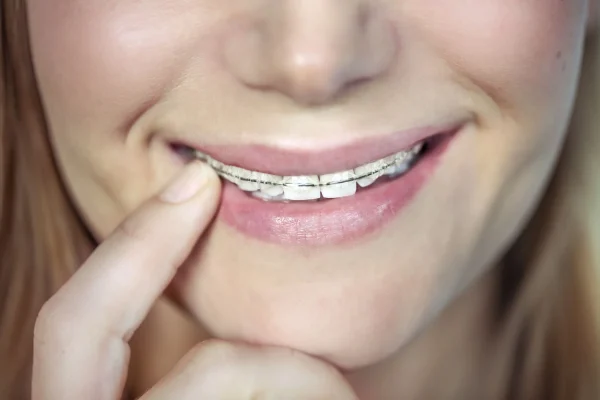
Table of Contents
ToggleKey Takeaways
-
- Losing or breaking a retainer is an urgency; contact your dental professional immediately to prevent teeth from shifting.
-
- Replacement retainers are custom-made medical devices, and costs can vary widely (typically £100-£500 or $150-$600 per arch), often not covered by dental insurance.
-
- You can get a new retainer from your original orthodontist, a new orthodontist, a general dentist, or through online services offering at-home impression kits.
-
- Online options might seem cheaper but require accurate self-impressions and lack in-person professional fitting and adjustments.
- A new retainer will maintain the current position of your teeth; it cannot correct shifting that has already occurred without prior orthodontic retreatment.
Replacement Retainer: Why and When Might You Need One?
Let’s start with the fundamentals. That retainer – whether it’s a clear Essix type, a classic Hawley with its wire and acrylic, or even a fixed lingual wire bonded behind your teeth – serves a singular, critical purpose: preventing your teeth from staging a rebellion and shifting back towards their original, pre-treatment positions. This phenomenon, known as orthodontic relapse, is frustratingly common if retainers aren’t worn as prescribed. Your teeth, you see, are set within bone that is constantly remodelling, and the ligaments holding them have a ‘memory’ of sorts. Post-treatment, these forces conspire to undo the work of your braces or aligners. The retainer acts as the steadfast enforcer, holding everything precisely in place while the bone and ligaments stabilize around the new alignment. But like any well-used tool, retainers aren’t invincible. They face daily wear, exposure to saliva, cleaning routines, and the pressures of your bite (especially if you clench or grind at night). Consequently, needing a replacement retainer isn’t a sign of failure; it’s an expected part of long-term orthodontic maintenance. Common culprits demanding a replacement include accidental damage – dropped retainers cracking, pets mistaking them for chew toys (it happens more often than you’d think!), or heat exposure causing warping (never leave them in a hot car!). Loss is another frequent flyer; retainers wrapped in napkins are notoriously prone to disappearing during meals out. Beyond accidents, simple wear and tear accumulate over time, leading to micro-cracks, thinning material, or a change in fit that renders the retainer less effective. Recognizing the when is just as crucial as understanding the why. Delaying replacement isn’t just inconvenient; it actively risks compromising the alignment you invested time and money to achieve.
How Often Should You Replace Your Retainer?
This is a question that echoes in dental offices everywhere, and the honest answer is: it depends. There’s no single, universal expiration date stamped on every retainer. However, we can certainly talk about typical lifespans and the factors that nudge the replacement timeline sooner rather than later. Generally speaking, clear Essix-style retainers, made from vacuum-formed plastic, tend to have a shorter lifespan than the more robust Hawley retainers. Think anywhere from 6 months to a few years for Essix, depending heavily on the material thickness and your habits. They are more susceptible to staining, developing micro-cracks, and potentially warping if not cared for properly. Hawley retainers, with their combination of sturdy acrylic and adjustable metal wire, often last longer, potentially several years, sometimes even up to five or more with meticulous care. Fixed or bonded retainers are designed for long-term wear, but the bonding agent can weaken, or the wire can break, necessitating professional repair or replacement. But these are just averages. The real determinant of replacement frequency comes down to individual factors. Are you a nighttime grinder or clencher? That constant pressure significantly accelerates wear and tear on any type of retainer. How diligent are you with your cleaning routine? Improper cleaning can lead to material degradation and buildup. Do you store your retainer safely in its case when not in use, or does it live a perilous existence on your nightstand or bathroom counter? Accidents happen, and careless handling drastically shortens lifespan. Ultimately, the best advice comes from the professional who knows your teeth and your specific retainer type: your orthodontist or dentist. They can assess the condition of your current retainer during check-ups and provide personalized guidance on when a replacement is advisable, before it becomes an emergency. Don’t rely solely on averages; rely on expert eyes examining your specific situation.
What Are the Signs You Need a New Retainer?
Your retainer might not send you a calendar notification for its retirement party, but it will often provide clues that it’s nearing the end of its effective service life. Learning to recognize these signs is crucial for proactive replacement, preventing any unwelcome dental drift. The most obvious indicators are visible damage: look closely for cracks, chips, or fractures in the plastic or acrylic. Even small cracks can compromise the structural integrity and harbour bacteria. Warping is another major red flag; if your clear retainer looks distorted or doesn’t seem to sit flush against your teeth as it once did, it may have been exposed to heat or undue pressure, rendering it ineffective or even potentially harmful by applying incorrect forces. A feeling of looseness is a significant sign; your retainer should fit snugly, applying gentle pressure to hold teeth. If it feels loose, slips easily, or rocks back and forth, it’s no longer doing its job properly and needs replacement. Conversely, sudden discomfort or difficulty inserting or removing the retainer, especially if it hasn’t felt that way before, could indicate either a change in the retainer’s shape or, more concerningly, a slight shift in your teeth – prompting an urgent dental visit. Visible wear, such as thinning spots or holes, particularly in clear retainers often caused by grinding, is a clear signal that the material is compromised. Don’t ignore subtle changes either. If you notice your teeth feeling slightly different or tender after removing the retainer in the morning, or if it seems harder to put back in after a day or night of wear, these could be early warnings that the fit is no longer optimal. Ignoring these signs is like ignoring a check engine light – you might get away with it for a short while, but eventually, it leads to bigger problems, namely, orthodontic relapse.
What Should You Do if You’ve Lost or Broken Your Retainer?
That sinking feeling when you realize your retainer is missing, or the sharp crack you hear as it slips from your grasp onto the bathroom tiles – it’s a moment of pure orthodontic dread. The absolute first, most crucial step? Don’t panic, but do act immediately. Time is genuinely of the essence here. Your teeth can start subtly shifting back towards their old positions surprisingly quickly, sometimes within just a few days of inconsistent retainer wear. The longer you go without your retainer, the greater the potential for relapse, potentially requiring more extensive (and expensive) intervention later to correct. So, take a deep breath, and then pick up the phone. Your immediate priority is to contact your orthodontist or dentist’s office. Explain the situation – whether it’s lost, broken, or chewed by the dog. They understand these things happen and are equipped to guide you through the next steps. They need to know as soon as possible to schedule you for an appointment to get a new impression or digital scan of your teeth. This scan or mold is the blueprint for creating your new, perfectly fitting replacement retainer. Delaying this call extends the period your teeth are unsupervised and vulnerable to shifting. Even if you think, “Oh, it’s only been a day or two,” make the call. Preventing shift is far easier and cheaper than correcting it once it has occurred. Remember, going without your retainer isn’t just risking your smile’s alignment; it can affect your bite and overall oral harmony. Prompt action is your best defence against backtracking on your orthodontic progress.
I’ve Lost My Retainer – What Are the Immediate Steps?
Okay, the retainer has officially gone rogue. It’s not in its case, not on the nightstand, not hiding under the pillow. After a frantic (but hopefully thorough) search proves fruitless, it’s time for damage control. Here’s your clear, actionable checklist:
Step 1: Contact Your Orthodontist or Dentist Immediately. Do not wait. Call the office the moment you realize it’s truly lost. Explain the situation clearly. They are the only ones who can initiate the process for a replacement. Waiting even a day or two allows teeth the opportunity to begin their subtle migration.
Step 2: Check for a Backup (If Applicable). Some orthodontic treatment plans, especially comprehensive ones, might have included a spare set of retainers initially, or perhaps you proactively purchased a backup previously. If you do have an identical, well-fitting backup, start wearing it immediately according to your prescribed schedule. However, do not assume an old retainer from months or years ago will still fit correctly – teeth can shift subtly even with good wear. If you have a backup, still inform your provider you’re now using it and need to arrange a replacement for the lost one.
Step 3: Schedule an Appointment. Your dental provider will need to see you to take a new impression (using that goopy putty material) or, increasingly common, a precise digital scan of your teeth. This creates the current model from which your new retainer will be fabricated. Be prepared to attend this appointment as soon as they can fit you in.
Crucial Warning: Resist the temptation for DIY fixes or stopgap measures. Trying to repair a broken retainer with glue is unsafe and ineffective. Using an old retainer that clearly doesn’t fit snugly anymore can actually be detrimental, applying incorrect pressure. Absolutely avoid generic, over-the-counter mouthguards; they are not designed to hold specific tooth alignment. Your only safe and effective route is through professional replacement.
What If You Lost Your Retainer Years Ago (e.g., 2 or 5 Years)?
Life happens. Maybe you finished treatment, wore your retainer diligently for a while, then it got lost during a move, or college life intervened, and getting a replacement fell by the wayside. Now, two, five, maybe even ten years later, you’re noticing some unwelcome crowding or spacing returning, and you’re wondering, “Can I just get a new retainer now?” The answer is nuanced. Yes, you can almost certainly get a new retainer made, but it’s crucial to understand what that retainer will do. If a significant amount of time – years, certainly – has passed since you last wore a retainer consistently, it’s highly probable your teeth have already shifted. A new retainer fabricated today will be based on an impression or scan of your teeth as they are now, in their current, likely shifted position. Therefore, this new retainer will simply hold your teeth in this current, potentially less-than-ideal alignment. It will not magically move them back to their post-braces perfection. If your goal is simply to prevent further shifting from the current position, then getting a new retainer made is a perfectly valid step. However, if you’re unhappy with the shifting that has already occurred and wish to regain your original results, a simple replacement retainer is not the solution. In this scenario, you’ll need a consultation with an orthodontist. They will assess the degree of relapse and discuss options for correction. This might involve a short course of orthodontic treatment – perhaps traditional braces again, or more commonly nowadays, a series of clear aligners – to nudge the teeth back into their desired positions before a new set of retainers is made to maintain that corrected alignment. So, while getting a retainer after years is possible, managing expectations about what it can achieve is key. A professional evaluation is absolutely essential.
Does It Matter If Only the Top or Bottom Retainer is Lost/Broken?
It absolutely matters. It’s easy to think, “Well, I still have the other one, so it’s half okay, right?” Unfortunately, dental alignment doesn’t quite work that way. Your upper and lower teeth function as an interconnected system. The way they meet when you bite down (your occlusion) is critical not only for chewing efficiency but also for maintaining the stability of both arches. Each arch helps to support and stabilize the position of the teeth in the opposing arch. If you lose or break your top retainer, for instance, your top teeth are now vulnerable to shifting. This shifting doesn’t just affect the aesthetics of your upper smile; it can alter how your top teeth contact your bottom teeth. This change in bite can, over time, potentially lead to instability or unwanted movement in the lower teeth as well, even if you’re still diligently wearing your bottom retainer. The same principle applies if you lose the bottom retainer – the lower teeth can shift, impacting the bite and potentially destabilizing the upper arch. Think of it like a finely tuned machine; removing one crucial gear affects the function of the entire mechanism. Therefore, even if only one retainer (top or bottom) is lost or damaged, you need to take action to replace that specific arch’s retainer promptly. Don’t delay assuming the remaining retainer is sufficient protection for your entire smile. Contact your dental professional to arrange for a replacement of the specific retainer that is missing or broken to maintain the harmony and stability of your complete bite and alignment. Protecting half your smile isn’t enough; you need both arches properly retained.
How Do You Get a New Retainer? Exploring Your Options
So, you’ve established the need for a replacement retainer. The next logical question is: where and how do you actually obtain one? The process isn’t quite like picking up a prescription; because retainers are custom-fitted medical devices, there are specific steps involved, primarily centred around capturing an accurate representation of your current teeth alignment. The cornerstone of getting any new retainer is obtaining a precise model of your teeth. Traditionally, this involves taking dental impressions – biting down into trays filled with a soft, putty-like material (alginate) that hardens to create a negative mold. This mold is then filled with dental stone to create a positive cast of your teeth, upon which the retainer is fabricated in a dental lab. Increasingly, however, dental practices are adopting digital scanning technology. Using a small intraoral wand, the dentist or orthodontist captures thousands of images of your teeth, which specialized software stitches together to create a highly accurate 3D digital model. This digital model can then be used to design and often even 3D-print or mill the retainer. Regardless of the method (impression or scan), this accurate model is non-negotiable. Once the model is ready, it’s sent to a dental laboratory (which might be in-house or external) where technicians craft your custom retainer. The main avenues for initiating this process are typically through your original orthodontist, a new orthodontist, potentially your general dentist, or via online direct-to-consumer services that utilize at-home impression kits. Each pathway has its own procedures, potential benefits, and considerations, which we’ll explore in more detail.
Can Dentists or Orthodontists Provide Replacement Retainers?
Yes, absolutely. Both orthodontists and, in many cases, general dentists are equipped to help you get a replacement retainer. There are, however, nuances to consider. Orthodontists, particularly the one who originally performed your treatment, are often the ideal first point of contact. Why? They have your complete treatment history, including potentially your final study models or digital scans from when your braces/aligners came off. If minimal time has passed and no significant shifting has occurred, they might (though it’s not guaranteed) be able to use these existing records to fabricate a new retainer, potentially saving you the step of a new impression or scan. Even if new records are needed, they specialize in tooth movement and retention, ensuring the retainer is perfectly suited to maintain your specific orthodontic result. If you’ve moved or prefer a different provider, a new orthodontist can certainly help. They will simply start fresh, taking new impressions or scans to create a retainer based on your current dental alignment. General Dentists are also often capable of providing replacement retainers, especially the common clear Essix type. Many general dental practices have the necessary equipment for taking impressions or scans and work with dental labs that fabricate retainers. This can be a convenient option if you have a good relationship with your family dentist. However, it’s worth confirming they routinely handle retainer replacements and are comfortable managing your specific needs, especially if you had complex orthodontic treatment initially. Regardless of who you see, the fundamental process remains similar: assessment of your current alignment, capturing a model via impression or scan, and lab fabrication followed by a fitting appointment to ensure comfort and proper function. Choose the provider you trust most with managing this crucial aspect of your long-term dental health.
Where Can You Buy Retainers Near You?
Finding a local provider to get your replacement retainer is usually straightforward, but knowing where to look and what to ask can streamline the process. Your primary options are typically orthodontic practices and general dental clinics in your vicinity. The most direct route is often returning to your original orthodontist, assuming they are still accessible. They have your history, understand your specific treatment outcome, and likely have efficient protocols for retainer replacement. If returning to your original provider isn’t feasible (due to relocation, retirement, or preference), seeking out another orthodontic specialist is an excellent choice. Orthodontists specialize exclusively in tooth alignment and bite correction, making them experts in retainer fabrication and fitting. You can easily find local orthodontists by searching online using terms like “orthodontist near me,” “orthodontic specialist [your city],” or checking professional directories like the American Association of Orthodontists (AAO) website in the US or similar governing bodies elsewhere. Many general dental practices also offer retainer replacement services. If you have a trusted family dentist, inquire if they provide this service. It can be convenient to handle it within a practice you already frequent. Search terms like “dentist retainer replacement near me” or “dental clinic new retainer [your city]” can yield results. When contacting potential providers (whether ortho or general dentist), be clear about your needs: “I need a replacement [e.g., clear/Essix/Hawley] retainer for my [upper/lower/both] teeth.” Ask about their process (impression vs. scan), the typical turnaround time for fabrication, and the estimated cost, including the appointment for the impression/scan and the fitting. Choosing a local provider offers the significant advantage of in-person consultation, professional impression/scan taking, and expert fitting and adjustment, ensuring the best possible outcome.
Is Ordering a Replacement Retainer Possible Online or Via Mail?
In our increasingly digital world, the option to order custom dental appliances online and receive them by mail has indeed emerged, and replacement retainers are part of this trend. Several companies now operate on a direct-to-consumer model, bypassing the traditional in-office dental visit for the impression-taking stage. The general concept is appealing due to its perceived convenience and often lower advertised cost compared to traditional routes. Typically, the process involves you ordering an at-home impression kit from the company’s website. This kit contains dental trays (similar to those used in a clinic) and impression putty material, along with detailed instructions on how to mix the putty and take accurate impressions of your upper and/or lower teeth yourself. You then carefully package these self-made impressions and mail them back to the company’s lab. Technicians at the lab pour models from your impressions and fabricate the custom retainers (usually clear Essix-style), which are then mailed directly to your doorstep. While this pathway offers undeniable convenience – no appointments needed, process completed from home – it places a significant emphasis on your ability to take a perfect dental impression, which can be trickier than it looks. Any inaccuracies in the impression will translate directly into an ill-fitting retainer. We will delve deeper into the specifics, costs, and considerations of this online route in a dedicated section later, but yes, it is fundamentally possible to order replacements via mail using these services. It represents a distinct alternative to the traditional in-office approach provided by local dentists and orthodontists, appealing particularly to those prioritizing convenience and potentially lower upfront costs, albeit with different considerations regarding professional oversight and fit assurance.
How Does Retainer Replacement Work in the UK?
Navigating retainer replacement within the UK involves understanding the interplay between NHS (National Health Service) and private dental care. The process itself – needing an impression or scan, lab fabrication – is fundamentally the same, but access and cost structures can differ. If your original orthodontic treatment was provided under the NHS (typically for individuals under 18 meeting specific criteria), the provision for replacement retainers might have certain stipulations. Historically, the NHS often covered the first set of retainers post-treatment, but replacements due to loss or breakage were frequently chargeable. NHS England guidance suggests that replacement removable appliances like retainers might be covered under the Band 3 treatment charge (£319.10 as of late 2023/early 2024), but this can depend on the specific circumstances and the time elapsed since the original treatment. It’s crucial to contact the NHS practice that provided your initial treatment to clarify their policy and any associated costs. Waiting lists for NHS appointments can sometimes be lengthy, which is a critical consideration given the urgency of replacing a lost or broken retainer to prevent relapse. For most adults, or those who had private orthodontic treatment initially, retainer replacement will typically be sought through private dental care. You can return to your original private orthodontist or dentist, or find a new one. Costs in the private sector will vary significantly between practices, location (e.g., London vs. other regions), and the type of retainer needed. Finding providers is straightforward: search online for “private orthodontist UK,” “private dentist retainer replacement [your city],” or use directories from professional bodies like the British Orthodontic Society (BOS) or the General Dental Council (GDC) register to find qualified practitioners. Always inquire about the full cost upfront, including consultations, impressions/scans, the retainer itself, and fitting appointments, whether pursuing NHS options (if eligible) or going private.
How Much Does It Cost to Replace Retainers?
Ah, the million-dollar question – or rather, the few-hundred-dollar question, typically. Let’s talk about the financial aspect of replacing your retainer. There’s no single fixed price, as the cost can fluctuate quite dramatically based on a confluence of factors. Providing an exact figure is tricky, but we can certainly explore the typical ranges and the variables that influence the final bill. Generally, you can expect the cost for a single replacement retainer (either upper or lower) to range anywhere from approximately £100 to £500 ($150 to $600 USD) or even more in some high-cost areas or specialist practices. If you need both upper and lower retainers replaced simultaneously, the total cost will naturally be higher, though sometimes practices offer a slightly reduced price for a pair compared to buying two single ones separately at different times. It’s essential to understand that replacement retainers are usually an out-of-pocket expense. Standard dental insurance plans often do not cover the cost of replacement retainers, especially those needed due to loss or neglect. While some high-end insurance plans might offer partial coverage, or perhaps a Health Savings Account (HSA) or Flexible Spending Account (FSA) can be used, you should anticipate bearing the primary financial responsibility. Occasionally, an orthodontist might include one free replacement within a specific timeframe as part of the initial comprehensive treatment package or offer a limited warranty, but this is not standard practice and should be clarified in your original treatment contract. When budgeting for long-term orthodontic maintenance, factoring in the potential need for one or more replacement retainers over the years is a prudent financial step.
What Factors Influence the Cost of New Retainers?
The price tag attached to your new retainer isn’t arbitrary; it reflects a combination of specific elements. Understanding these can help you decipher quotes and appreciate the value involved. Firstly, the Type of Retainer is a major determinant. Clear, vacuum-formed Essix retainers are often, though not always, less expensive than traditional Hawley retainers, which involve more intricate lab work combining acrylic and bent wire. Fixed or bonded lingual retainers involve chair-side time for bonding and are priced differently, often factoring in the clinical procedure as much as the appliance itself. The Provider’s Fees and Location play a significant role. Fees charged by an orthodontic specialist in a major metropolitan area are likely to be higher than those from a general dentist in a smaller town, reflecting differences in overhead costs, specialization, and local market rates. Need for New Impressions/Scans: If your provider can use existing digital records (only possible if very little time has passed and no shift occurred), it might slightly reduce the cost compared to needing a new appointment specifically for impressions or intraoral scanning, which involves chair time and clinician expertise. Laboratory Fees: The cost the dental practice pays to the external or in-house lab for fabricating the retainer is factored into your price. Labs using higher-quality materials or more advanced techniques (like 3D printing) may have higher fees. Single Arch vs. Both Arches: Naturally, replacing retainers for both upper and lower teeth will cost more than replacing just one. Some practices might offer a slight discount for getting both done simultaneously compared to the cost of two individual replacements ordered separately. Finally, Complexity and Adjustments: While less common for simple Essix replacements, Hawley retainers might require minor adjustments at the fitting appointment, and the clinician’s time for this is implicitly included in the overall cost. Always ask for a clear breakdown or an all-inclusive quote covering the impression/scan, the retainer itself, and any necessary fitting appointments.
Why Are Replacement Retainers Sometimes So Expensive?
Seeing the potential cost for what seems like a simple piece of plastic or wire can sometimes lead to sticker shock. “Why so much?” is a fair question. The expense stems from several underlying factors that aren’t immediately apparent. Firstly, Customization is Key: Your retainer isn’t an off-the-shelf product. It’s a bespoke medical device, meticulously crafted to fit your unique dental anatomy with precision. This requires either a highly accurate physical impression or a detailed digital scan – both processes requiring clinical time, skill, and materials or technology. Laboratory Fabrication Costs: Creating the retainer involves skilled dental technicians and specialized equipment. Whether it’s thermoforming plastic over a stone model, bending wires and embedding them in acrylic for a Hawley, or using advanced CAD/CAM technology for digital design and 3D printing/milling, there are significant material and labour costs involved in the lab process. High-quality, durable, biocompatible dental-grade materials are used, which are inherently more expensive than standard plastics. Clinical Expertise and Chair Time: When you visit your dentist or orthodontist, you’re paying for their professional expertise, diagnosis, and time. Taking accurate impressions or scans requires skill. Evaluating the fit of the new retainer and making any necessary minor adjustments also involves valuable chair time and clinical judgment to ensure the appliance is effective and comfortable. Overhead Costs: Like any healthcare facility, dental practices have substantial overheads – rent, staffing, utilities, insurance, sterilization protocols, and investment in technology (like intraoral scanners) – which are factored into the pricing of all procedures, including retainer replacement. Value of Prevention: While the upfront cost might seem high, consider the alternative. Failing to replace a lost or broken retainer can lead to significant orthodontic relapse, potentially requiring extensive and far more expensive retreatment with braces or aligners down the line. In this context, the cost of a replacement retainer is an investment in preserving your initial orthodontic outcome and preventing much larger future expenses.
Can You Buy Retainers Online Using At-Home Kits?
The digital marketplace has indeed permeated the dental world, offering a direct-to-consumer pathway for various products, including replacement retainers. This route leverages the convenience of the internet and mail order, promising a potentially more affordable and appointment-free experience. The core appeal lies in bypassing the traditional need for in-office visits for impressions and fittings. Instead, these online companies empower (or perhaps burden, depending on your perspective) the customer to take their own dental impressions using an at-home kit. These kits, mailed to you after placing an order, typically contain impression trays for upper and lower arches, multiple sets of dental putty (usually vinyl polysiloxane – VPS), and detailed instructions, often supplemented by online video tutorials. The success of this entire process hinges critically on your ability to capture a highly accurate, distortion-free impression of your teeth. Once you’ve navigated this crucial step, you ship your impressions back to the company’s designated lab. There, technicians pour models, fabricate your custom retainers (almost always the clear Essix type), and mail the finished product back to you. The main draws are clear: convenience (no appointments, done on your schedule) and potentially lower cost, as these companies cut out the overhead associated with clinical chair time and professional fees. However, this model also introduces significant considerations regarding accuracy, the lack of professional oversight during the impression stage, and the absence of an in-person fitting to check for comfort, proper seating, and potential adjustments. Choosing a reputable company with clear instructions, good customer support, and policies for remakes if impressions are initially inadequate is vital if considering this option.
How Do Custom Fit Retainer Online Services Work?
Let’s break down the typical journey when opting for an online retainer service.
Step 1: Ordering: You visit the company’s website, select the type of retainer needed (upper, lower, or both), and place your order. This usually involves creating an account and making the payment upfront.
Step 2: Receiving the Impression Kit: The company ships the at-home impression kit to your address. Inside, you’ll find dental trays (often in a couple of sizes to ensure a good fit), several packets of base and catalyst putty, detailed printed instructions, and sometimes a pre-paid return shipping label.
Step 3: Taking Your Impressions: This is the most critical and potentially challenging step for the user. You need to carefully follow the instructions to mix the two parts of the putty quickly and uniformly, load it into the correct tray, and then firmly and evenly seat the tray over your teeth, holding it perfectly still for the prescribed setting time (usually a few minutes). Achieving a detailed, bubble-free impression that captures the entire arch and gumline accurately requires care and attention. Most kits provide enough material for a practice attempt or a redo if the first try isn’t perfect. Some services offer video support during this stage.
Step 4: Returning Impressions: Once you have what you believe are good impressions, you package them securely (following the company’s guidelines) and ship them back using the provided label or instructions.
Step 5: Lab Fabrication: Upon receiving your impressions, technicians inspect them for adequacy. If acceptable, they pour stone models and use these to thermoform your custom clear retainers using dental-grade plastic sheets.
Step 6: Receiving Your Retainers: The finished retainers are mailed directly to you, typically within a couple of weeks from when the lab received your impressions. You then start wearing them as prescribed (usually nightly). The entire process relies heavily on user execution for the impression stage, differing significantly from the professional oversight in a clinical setting.
Are Online Retainers Cheaper Than Dentist Prices?
One of the primary marketing angles for online retainer services is cost savings, often boasting significant reductions compared to traditional dental office routes – claims like “up to 80% less than the dentist” are not uncommon. And in many cases, the direct price comparison does favour the online option. The typical cost for a single arch retainer from an online service often falls in the range of £70-£150 ($90-$200 USD), which can indeed be substantially lower than the £100-£500+ ($150-$600+) range often encountered at a private dental or orthodontic practice. The reason for this price disparity lies mainly in the business model. Online services eliminate the costs associated with clinical infrastructure: no rent for prime office space, fewer staff (no receptionists, dental assistants for this specific procedure), and critically, no professional chair time for the impression taking and fitting appointments. They operate primarily as lab-direct services facilitated by mail. However, while the sticker price might be lower, it’s important to consider the value proposition and potential hidden costs or risks. The main trade-off is the lack of professional supervision and assurance. If your self-taken impression is inaccurate (which is a real possibility for untrained individuals), the resulting retainer may not fit properly. This could range from being slightly uncomfortable to completely ineffective, or worse, applying incorrect pressure that could potentially harm your teeth or gums. Reputable online companies often offer a free remake if the initial impression is deemed unusable by their lab, or potentially a refund, but this still involves delays and hassle. Furthermore, there’s no professional fitting appointment to verify the retainer is seated correctly and make minor adjustments for comfort or optimal contact. So, while potentially cheaper upfront, the online route carries a higher degree of user responsibility and lacks the clinical safety net of traditional care.
What Types of Replacement Dental Retainers Are Available?
When the time comes for a replacement, you’ll generally be looking to replace the type of retainer you originally had, or potentially switching if appropriate and discussed with your dental professional. Understanding the main categories helps clarify your options and discussions with your provider. The most common types fall into two broad categories: removable and fixed.
Removable retainers, as the name suggests, are designed to be taken in and out by the patient. Within this category, the two most prevalent styles are Essix retainers and Hawley retainers.
Essix retainers are the ubiquitous clear, plastic trays that fit snugly over the entire arch of teeth, much like clear aligners (though made from a slightly different, often more rigid, material designed for holding, not moving).
Hawley retainers are the more traditional design, featuring a custom-molded acrylic portion that sits against the palate (upper) or inner aspect of the lower teeth, with a characteristic metal wire (labial bow) running across the front teeth to maintain alignment.
The second category is Fixed retainers, also known as bonded or permanent retainers. These typically consist of a thin wire bonded directly to the tongue-facing side (lingual surface) of the front teeth (usually canine to canine, upper or lower). They are not removable by the patient and provide constant retention. While effective, they require meticulous hygiene and any repair or replacement absolutely necessitates a visit to the dental professional.
When discussing replacement, you’ll usually specify which type you need based on what you previously wore and found effective, although your dentist or orthodontist might recommend a different type based on your current needs or clinical situation.
What Are Basic Replacement Retainers (e.g., Clear Essix)?
The term “basic replacement retainer” most commonly refers to the clear, transparent, vacuum-formed type known technically as an Essix retainer (named after the company that popularized the technique, though now a generic term). These are arguably the most frequently used type of removable retainer today, largely due to their aesthetic appeal – they are virtually invisible when worn. They function by covering the entire biting surfaces and sides of the teeth in a given arch, effectively acting like a thin, rigid glove that prevents movement. The fabrication process is relatively straightforward: a sheet of clear, biocompatible thermoplastic material (often PETG – polyethylene terephthalate glycol-modified) is heated and then vacuum-sealed or pressure-formed over a model of your teeth (either a physical stone cast or a 3D-printed model from a digital scan). Once cooled, the excess material is trimmed away, and the edges are smoothed for comfort. Their popularity stems from being discreet and generally comfortable for most wearers once accustomed. They are typically prescribed for night-time wear after an initial period of more extended use. However, they do have potential downsides. The plastic material can be susceptible to staining (from coffee, tea, coloured foods if worn while consuming them – which is generally advised against), warping if exposed to heat, and developing cracks or holes over time, especially with heavy grinding or clenching. Their lifespan, as discussed earlier, is often shorter than that of Hawley retainers. When ordering a replacement, specifying a “clear” or “Essix-style” retainer is usually sufficient for your provider or an online service to understand what you need. They represent the modern standard for basic, effective, removable retention.
Are There Upgraded or Specialty Retainers Available?
Beyond the standard clear Essix retainer, other options exist that might be considered “upgraded” or serve specific needs. The most prominent alternative is the Hawley retainer. This classic design, while perhaps less aesthetically discreet due to the visible front wire, offers distinct advantages. Its sturdy construction from acrylic and metal generally makes it more durable and longer-lasting than Essix retainers. Furthermore, the wire component can often be slightly adjusted by the orthodontist to fine-tune tooth positions or improve the fit over time, offering a degree of adaptability not possible with the rigid Essix type. Some patients also find that because the Hawley doesn’t cover the biting surfaces of the teeth, it allows for more natural contact between upper and lower arches when worn, which can be preferable, and may interfere less with speech.
Another category involves Fixed or Bonded retainers. While not an “upgrade” in the removable sense, they represent a different philosophy – permanent retention without daily removal. A thin wire is cemented to the back surfaces of the front teeth. This is often considered for the lower front teeth, which are particularly prone to crowding relapse. The advantage is constant retention without compliance worries. The disadvantages include challenges with flossing (requiring floss threaders or specific techniques), potential for plaque buildup if hygiene isn’t immaculate, and the fact that repair or replacement requires a dental appointment.
There are also minor variations, like retainers incorporating pontics (false teeth) for missing teeth or modifications for specific bite issues, which fall under the ‘specialty’ umbrella. Discussing these options with your orthodontist can determine if a type other than a basic Essix might be more suitable for your long-term retention needs, balancing factors like durability, aesthetics, comfort, and maintenance requirements.
Can Retainers Always Be Replaced? Addressing Specific Scenarios
While getting a replacement retainer is usually possible and recommended, there are certain situations and common questions that require specific clarification. It’s not always as simple as just ordering a new one, especially if circumstances have changed since your original fitting. Managing expectations is key. A replacement retainer is designed to maintain the current position of your teeth. It’s a passive appliance, not an active one designed for tooth movement like braces or aligners. This distinction becomes crucial when addressing scenarios involving elapsed time or tooth shifting. Patients often wonder if a replacement is viable after years without wearing one, or if their teeth have noticeably moved. The answer often involves understanding the difference between retention (holding steady) and retreatment (moving teeth back). Questions also arise about the feasibility of creating a new retainer from an old, broken one, or whether the first replacement comes free of charge. Debunking myths and clarifying the realities of these specific situations helps patients make informed decisions and understand the potential need for more than just a simple replacement. Addressing these common concerns proactively ensures a smoother process and avoids disappointment if expectations don’t align with clinical possibilities. Let’s tackle some of these frequent “what if” scenarios regarding retainer replacement.
Is It Possible to Get a New Retainer if Your Teeth Have Shifted?
This is a critical point of understanding. Yes, it is absolutely possible to get a new retainer fabricated even if your teeth have shifted since you stopped wearing your previous one or since your braces came off. However, you must be crystal clear about what this new retainer will achieve. As mentioned, retainers are designed to hold teeth in their current position. Therefore, if your teeth have already shifted – perhaps showing some minor crowding, spacing, or rotation – a new retainer made from a current impression or scan will simply maintain them in that shifted position. It will prevent further unwanted movement, but it will not move them back to the perfectly aligned state they were in immediately post-treatment. If you are content with the current alignment, even if it’s not perfect, and your primary goal is to stop any further relapse, then getting a new retainer is a sensible and recommended step. However, if you are unhappy with the degree of shifting that has occurred and desire to restore your original orthodontic result, a simple replacement retainer is not the solution. In this case, you would need to consult with an orthodontist to discuss orthodontic retreatment. This might involve a limited course of braces or, more commonly these days, a series of clear aligners designed specifically to correct the relapse. Once this corrective phase is complete, then new retainers would be fabricated to hold the newly re-aligned teeth. So, the answer is twofold: yes, you can get a retainer for shifted teeth to hold them, but no, it won’t correct the shift – that requires active treatment first.
Can You Make a New Retainer From an Old One?
This is a common misconception, often stemming from a desire to save costs or expedite the process. Unfortunately, the answer is a definitive no. You cannot fabricate an accurate, effective new retainer directly from an old, broken, or warped one. The reason lies in the fundamental requirement for precision in retainer manufacturing. Retainers must fit intimately against the teeth to hold them securely in place. This precise fit can only be achieved by creating the retainer over a highly accurate model of your teeth as they are right now. An old retainer, especially if it’s damaged (cracked, warped, significantly worn), no longer represents the exact shape and contour of your teeth or the intended fit. Attempting to use it as a template would inevitably introduce inaccuracies, resulting in a new retainer that doesn’t fit properly. An ill-fitting retainer is not only ineffective at preventing tooth movement but could potentially apply undesirable forces, causing discomfort or even unwanted shifts. The integrity of the impression or scan is paramount. Trying to patch up or duplicate an old, compromised appliance simply cannot replicate the necessary precision. Think of it like trying to make a new key by copying a broken or bent one – the copy is unlikely to work in the lock. To ensure your new retainer does its job effectively and safely, it must be custom-fabricated based on a fresh, accurate representation of your current dental alignment, obtained through a new dental impression or a digital intraoral scan performed by a professional (or via a high-quality self-impression kit if using an online service, acknowledging the inherent risks).
Is Your First Retainer Replacement Usually Free?
It’s a hopeful question many patients ask, especially when faced with the unexpected cost shortly after finishing expensive orthodontic treatment: “Is the first replacement covered?” Generally, the answer is no, the first replacement retainer is typically not free. While it might seem like a reasonable expectation, the cost of fabricating a custom dental appliance involves materials, lab fees, and potentially clinical time, which are usually passed on to the patient. Think of it like losing prescription glasses – while frustrating, obtaining a replacement pair incurs a cost. However, there can be exceptions, making it essential to check your original treatment contract or inquire directly with your orthodontist’s office. Some comprehensive orthodontic treatment plans might include a specific warranty period during which one replacement set (or sometimes just one arch) is provided free of charge or at a reduced cost, particularly if the retainer fails due to a manufacturing defect rather than patient loss or negligence. This is more the exception than the rule, though. Some practices may also offer “retainer insurance” programs for an additional fee at the start of treatment, which cover replacements for a set period. But barring these specific arrangements outlined in your agreement, you should anticipate paying for replacement retainers, including the first time one is needed due to loss, breakage, or wear and tear. Always clarify the policy with your provider to avoid surprises. Assuming it will be free can lead to budget misunderstandings when the need arises. Prepare for replacement as a potential long-term maintenance cost associated with preserving your orthodontic investment.
Is It Ever Too Late to Get a New Retainer?
This question often comes laced with a hint of anxiety, perhaps from someone who hasn’t worn a retainer in many years and now regrets it. The reassuring answer is: it’s generally never “too late” to get a new retainer… if your goal is to maintain the current position of your teeth. Regardless of how much time has passed or how much your teeth may have shifted since your braces came off, a retainer can be made based on your current alignment. Wearing this new retainer (usually nightly) will help prevent any further unwanted movement from occurring. So, if you look in the mirror today, and decide you’re okay with how your teeth look now but definitely don’t want them getting any worse, then getting a retainer is a perfectly valid and beneficial step at any point. It provides stability and halts any ongoing relapse. However, it’s crucial to reiterate the point made earlier: this new retainer will only hold the current position. If significant shifting has already occurred, and you are unhappy with that current alignment, then simply getting a retainer is “too late” to reverse the changes. In that scenario, as discussed, you would need to explore orthodontic retreatment options first to move the teeth back towards the desired position, followed by new retainers to maintain the corrected result. So, frame the question differently: Is it too late to prevent further shifting? No, never. Is it too late to reverse existing shifting with just a retainer? Yes, it is. Understanding this distinction empowers you to seek the right solution – either retention of the current state or consultation for active correction.
What Can You Use Instead of a Lost Retainer Temporarily?
The moment of realization – your retainer is gone. Panic might tempt you to seek a quick, temporary fix while you wait for a replacement appointment. “What can I use in the meantime?” is a common, urgent question. The blunt, medically sound answer is: nothing. There are no safe or effective DIY substitutes for your custom-fitted orthodontic retainer. Your retainer is precision-engineered to fit your teeth exactly and apply gentle, specific pressure (or neutrality) to maintain their precise positions. Attempting to use anything else is not only likely to be ineffective but could potentially be harmful. Generic, over-the-counter sports mouthguards or nightguards for grinding are not suitable substitutes. They are designed for different purposes (impact protection or cushioning for grinding) and lack the intimate, precise fit required for orthodontic retention. Wearing such an appliance could fail to hold teeth properly, or worse, exert unwanted forces that could actively move teeth in undesirable directions. Trying to use an old retainer that no longer fits snugly is also ill-advised for the same reasons – it won’t provide the correct retention and could apply harmful pressure. Even trying to wear the retainer from the opposing arch (if you only lost one) offers no benefit to the arch missing its retainer. The only correct course of action when a retainer is lost or broken is to contact your orthodontist or dentist immediately to arrange for a professional replacement. While waiting for your appointment (which should be scheduled urgently), you simply go without. Do not attempt home remedies or substitute appliances; the risk of causing further problems outweighs any perceived temporary benefit. Focus solely on getting the proper replacement process started ASAP.
Frequently Asked Questions About ‘replacement retainer’
Navigating the world of replacement retainers can spark numerous questions. While we’ve covered many aspects in detail, let’s consolidate answers to some of the most frequently asked queries for quick reference. These points often echo the core concerns patients have when facing the need for a new retainer, revolving around cost, process, urgency, timing, and alternative options. Understanding these fundamentals empowers you to act swiftly and appropriately when your retainer needs replacing, ensuring the long-term stability of your hard-earned smile. Think of this section as your rapid-fire summary, reinforcing the key takeaways from our comprehensive guide. Addressing these common points directly helps demystify the process and underscores the importance of professional guidance in maintaining your orthodontic results effectively over the years. From the practicalities of cost and ordering to the clinical realities of shifting teeth and retainer lifespans, these FAQs encapsulate the essential knowledge every retainer-wearer should possess.
How Much Does It Cost to Replace Retainers?
The cost of replacing retainers is a significant concern for many, and unfortunately, there isn’t one set price. The expense varies widely, typically ranging from £100 to £500 ($150 to $600 USD) or potentially more per arch (upper or lower). Key factors influencing this price include the type of retainer (clear Essix vs. traditional Hawley vs. fixed), the provider (orthodontic specialist fees may differ from general dentist fees), your geographic location (costs tend to be higher in major cities), and whether you need new impressions or scans (which involve clinical time and materials/technology). Replacing both arches simultaneously will naturally cost more than a single arch, though sometimes a package price offers slight savings. It’s crucial to remember that replacement retainers are usually not covered by standard dental insurance and are considered an out-of-pocket expense. While some initial orthodontic treatment packages might include a limited warranty or one replacement within a short timeframe, this isn’t standard. Always confirm costs directly with the provider, asking for an all-inclusive quote covering the impression/scan appointment, the retainer fabrication, and any necessary fitting appointments. Budgeting for potential retainer replacement should be considered part of the long-term maintenance plan for preserving your orthodontic investment. Comparing quotes between providers (e.g., orthodontist vs. dentist vs. online service) is possible, but ensure you’re comparing like-for-like service and considering factors beyond just the price tag, such as professional oversight and fitting assurance.
How Do You Get a New Retainer? Exploring Your Options
Obtaining a new retainer fundamentally requires creating a precise model of your current teeth alignment. The process typically starts by contacting a dental professional or an online service. Your original orthodontist is often the best starting point, as they have your treatment history and potentially existing final models/scans (though new ones are usually needed if significant time has passed). A new orthodontist or your general dentist can also provide replacement retainers; they will take new impressions (using putty-like material in trays) or perform a digital intraoral scan to capture your current bite. This model is then sent to a dental laboratory where technicians fabricate your custom retainer (usually clear Essix or Hawley type). A fitting appointment typically follows to ensure it seats correctly and is comfortable. Alternatively, online retainer companies offer a direct-to-consumer route. You order an at-home impression kit, take your own impressions following their instructions, mail them back, and the lab fabricates and ships the retainers directly to you. This option bypasses in-office appointments but places the responsibility for accurate impressions on you and lacks professional fitting. Regardless of the route, the core steps involve capturing your current dental state (via impression or scan) and lab fabrication. Contacting a provider promptly is key, especially if your retainer is lost or broken, to minimize potential tooth movement while waiting for the replacement. Each option – original orthodontist, new provider, online service – has pros and cons regarding cost, convenience, and clinical oversight.
What Should You Do if You’ve Lost or Broken Your Retainer?
Losing or breaking your retainer requires immediate action to prevent your teeth from shifting.
Step 1: Don’t Panic, but Act Fast. Teeth can begin moving back towards their original positions relatively quickly, sometimes within days.
Step 2: Contact Your Orthodontist or Dentist Immediately. This is the most critical step. Call their office as soon as possible, explain the situation (lost or broken), and schedule an appointment for a new impression or scan. The sooner they know, the sooner they can start the replacement process.
Step 3: Search Thoroughly (If Lost). Double-check common loss locations – napkins, lunch trays, pockets, nightstands – but don’t delay contacting your provider while you search extensively.
Step 4: Do Not Attempt DIY Fixes. Using glue on a broken retainer is unsafe and ineffective. Wearing a damaged or ill-fitting retainer can be harmful.
Step 5: Do Not Use Substitutes. Generic mouthguards or old retainers are not suitable replacements and can cause problems. Go without a retainer only until your professional replacement is ready.
Step 6: Attend Your Appointment Promptly. Get the new impression or scan done as scheduled. The goal is to minimize the time your teeth are without their stabilizing force. Delaying replacement risks orthodontic relapse, potentially undoing the time and investment of your original treatment. Prompt communication with your dental provider is paramount. They understand these situations occur and will guide you through the necessary steps to get a new, properly fitting retainer quickly.
How Often Should You Replace Your Retainer?
There’s no single answer to how often retainers need replacing, as lifespan depends on several variables. However, general guidelines exist. Clear Essix-style retainers, made from thermoformed plastic, typically last anywhere from 6 months to a few years. Their lifespan is heavily influenced by material thickness, patient habits (clenching/grinding significantly shortens life), and care routines (improper cleaning or heat exposure can damage them). Hawley retainers, with their acrylic base and metal wire, are generally more durable and can last several years, sometimes five or more, with proper care. Fixed/Bonded retainers are designed for long-term wear, but the bonding can fail, or the wire can break, requiring professional repair or replacement.
Key factors impacting replacement frequency include:
- Material Type: As noted, Hawley often outlasts Essix.
- Patient Habits: Grinding (bruxism) is a major wear factor. Careless handling increases risk of breakage.
- Oral Hygiene: Poor cleaning can degrade materials.
- Fit Changes: Over time, minor tooth shifts or retainer distortion might necessitate replacement even if undamaged.
The best approach is regular assessment by your dentist or orthodontist. They can examine the retainer’s condition and fit during check-ups and advise when replacement is recommended, often before catastrophic failure or loss occurs. Don’t rely solely on average lifespans; individual factors and professional evaluation are key. Think of replacement not as a failure, but as routine maintenance for your smile. Proactive replacement based on wear or professional advice is better than emergency replacement after loss or breakage.
Can You Buy Retainers Online Using At-Home Kits?
Yes, it is possible to purchase replacement retainers through various online companies that utilize an at-home impression kit system. This direct-to-consumer model offers potential convenience (no dental appointments required) and often lower upfront costs compared to traditional in-office routes. The process typically involves ordering a kit online, receiving trays and putty material, taking your own upper and/or lower dental impressions by following provided instructions (often with video guides), mailing these impressions back to the company’s lab, and then receiving your custom-fabricated clear (usually Essix-style) retainers by mail weeks later. While seemingly straightforward, the success of this method hinges critically on the user’s ability to take highly accurate, distortion-free dental impressions, which can be challenging without professional training and assistance. Any inaccuracies in the impression will result in an ill-fitting retainer, potentially rendering it uncomfortable, ineffective, or even harmful. Key considerations include choosing a reputable company with good reviews, clear instructions, robust customer support, and fair policies regarding unsatisfactory impressions or ill-fitting retainers (e.g., free remakes or refunds). The major trade-off is the lack of professional oversight during the crucial impression stage and the absence of an in-person fitting appointment to verify proper seating, check for sore spots, and make minor adjustments. While a viable option for some, particularly those comfortable with the DIY aspect and seeking cost savings, it carries inherent risks related to impression accuracy and fit assurance compared to the traditional dentist/orthodontist pathway.

